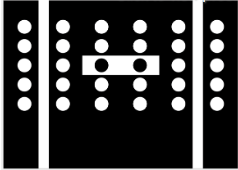Perfecting Vision: The Art and Science of ADAS Calibration for Forward Facing Cameras
In today's fast-paced automotive landscape, advanced driver-assistance systems (ADAS) have become pivotal in enhancing vehicle safety and performance. Forward-facing cameras are crucial components of these systems, providing vital data for features such as adaptive cruise control, lane-keeping assistance, and collision avoidance. However, to operate effectively, these cameras require precise calibration. This intricate process is not only an art but also a science, ensuring that the technology functions seamlessly and safely.
As the demand for reliable and efficient ADAS calibration grows, so does the need for accessible solutions. From portable ADAS systems to affordable calibration stands, automotive professionals are seeking tools that combine quality and value. Options like the Affordable Auto Glass ADAS Target System and various static calibration stands under $5500 offer great flexibility for shops looking to enhance their service offerings without breaking the bank. In this article, we will explore the essential components and techniques involved in ADAS calibration for forward-facing cameras, highlighting the importance of accuracy and the benefits of utilizing the right tools in the calibration process.
Overview of ADAS Calibration
ADAS calibration is a crucial process that ensures advanced driver assistance systems function accurately and safely. These systems, which include features like adaptive cruise control, lane-keeping assist, and automatic emergency braking, rely on precise input from forward-facing cameras and sensors. Proper calibration aligns the camera and sensors to the intended field of vision, ensuring that the vehicle's systems register the surrounding environment correctly. Without accurate calibration, ADAS features may malfunction, leading to potential safety hazards.
The calibration process can vary widely depending on the type of vehicle, the specific ADAS technologies in use, and the equipment available. Static calibration involves positioning the vehicle in a controlled environment while using fixed targets, while dynamic calibration often requires driving the vehicle to ensure the systems adapt to real-world conditions. The choice between these methods can affect both the efficacy of the calibration and the time required to complete it. Technicians must choose the right approach to achieve optimal performance and safety.
With advancements in technology, portable ADAS systems have become increasingly popular among service providers. These systems, such as the affordable Auto Glass ADAS Target System and the Carcal ADAS, allow for efficient and cost-effective calibration without needing extensive setups. Priced affordably, often under $5500, these solutions enable automotive professionals to deliver high-quality services without significant investment. As the demand for ADAS-equipped vehicles grows, mastering calibration techniques becomes essential for ensuring driver and passenger safety.
Choosing the Right ADAS System
Selecting the appropriate ADAS system is crucial for effective calibration of forward-facing cameras. With various options available, consider your specific needs and the types of vehicles you will be servicing. For instance, if you are looking for a cost-effective solution, options like the Affordable Auto Glass ADAS Target System or the ADAS System under 5500 may be ideal. They provide essential features without compromising quality or accuracy in calibration.
A Portable ADAS system offers significant advantages, particularly for mobile technicians or those operating in constrained spaces. Systems such as the Portable ADAS Stand allow for convenient setup and flexible operation, making them suitable for diverse working environments. Additionally, static adas calibration stand of transport enhances productivity, allowing you to efficiently service multiple locations without the hassle of bulky equipment.
When evaluating an ADAS calibration stand, it is important to consider compatibility with specific vehicle brands and models. For example, the Subaru mono calibration target is designed to accommodate Subaru vehicles effectively. Ensure that the system you choose can handle a wide range of vehicles, ideally including well-known calibration standards. Investing in a reliable static ADAS calibration stand can maximize your return on investment by ensuring consistent and precise calibrations across different vehicles, enhancing your service offerings.
Best Practices for Effective Calibration
When performing ADAS calibration for forward-facing cameras, it is crucial to start by ensuring the vehicle is in optimal condition. This includes verifying that all sensors are clean and unobstructed, as dirt or damage can significantly impact the calibration process. Additionally, tire pressure should be checked and adjusted to the manufacturer's recommended levels, as improper tire pressure can affect vehicle dynamics and skew calibration results.

Utilizing the right equipment plays a vital role in effective calibration. Portable ADAS systems like the Affordale Auto Glass ADAS Target System can provide flexibility and ease of use across different vehicle models. When selecting an ADAS calibration stand, consider options such as the static ADAS calibration stand or the Portable ADAS Stand, especially those priced under 5500. These systems ensure accurate alignment and provide precise measurements for various manufacturers, leading to successful calibration outcomes.
Finally, technicians should follow a systematic approach when calibrating each vehicle. This includes adhering to manufacturer specifications for each model and using targets, such as the Subaru mono calibration target, that are appropriate for the vehicle's camera system. Diligent documentation of the calibration process creates an invaluable record that can assist in future repairs or recalibrations, enhancing both the accuracy of the work performed and the safety of the vehicle.